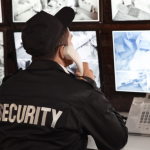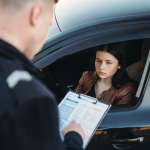Have you ever wondered why certain schools appear to have a vibrant, active community while others struggle to get parents, students, and community organizations engaged? A school’s performance in the classroom is insufficient; it also has to establish close relationships with families, students, and society at large. Making the school community a welcome and useful environment for everyone depends on your participation in it. But how can educational environments strengthen these connections? We will discuss several strategies schools can use to improve their relationship with their partners and increase the participation of the school community.
Create channels of contact
Any strategy for involving individuals in their communities depends mostly on open communication. Schools should provide parents, teachers, and students with many means of expression for their ideas, concerns, and views. These channels of communication, emails, online forums, and social media sites help institutions remain transparent and easily accessible. By keeping everyone in the loop, schools help to establish trust and make members of society respected and heard.
By allowing parents, employees, and outside partners to easily exchange contact data and network digital tools, including digital business cards. It can also help to increase communication between them. They include all the necessary school information and can be submitted straight away. This provides old-fashioned means of communication with a contemporary twist and helps people keep in contact.
Join forces with nearby companies to support one another
Schools can benefit much from developing ties with local companies. Working in this manner can provide the institution with fresh tools, opportunities, and support. Local businesses could assist with event funding, school project guidance, or job placement for youngsters. Schools can thus be rather useful community venues for holding events, seminars, and courses relevant to local business and interpersonal interactions. Working together, the economic sector as well as the educational one can flourish.
Digital business cards simplify the rapid sharing of contact details with local business owners and other crucial individuals, therefore facilitating communication and relationship building.
Involve parents in meaningful events
For the group at the school, parents are really vital. Apart from parent-teacher interviews, schools should look for additional strategies to sustain their attention. Offering parents a variety of significant activities such as family evenings, seminars, or volunteer opportunities. This can assist in strengthening the link between their home and their place of education. These gatherings allow parents to interact with one another and guide their kids in novel learning directions.
If parents believe they participate in their child’s education, they are more inclined to be active in it. This helps the school group overall to be better.
Meet individuals via social media
Real-time social media is a fantastic tool for schools to interact with their local communities. Lighting school videos, pictures, and tales keep the community current and engaged. It also provides those outside of the classroom with a means of involvement and a sense of belonging to the school.
Schedule activities for the whole neighborhood
Organizing activities for the whole community helps everyone engage in an enjoyable manner. Schools can host fairs, concerts, sporting activities, and more involving not only parents and children but also neighbors and businesses. These gatherings allow community members from all walks of life to interact and help the school.
Create chances for continuous education
Schools should be venues where individuals from the community and children may constantly choose fresh knowledge. If the institution provides seminars, lectures, and courses covering a broad spectrum of subjects, parents and members of the community will be eager to go to the school. This will enable the institution to establish a reputation as a location where individuals may develop and learn. These learning opportunities range from seminars on visual skills and technology to courses on financial management and parenting techniques.
Conclusion
Schools can strengthen their relationships with the community in many different ways, including by supporting honest communication, arming students with greater authority, and using contemporary technologies such as digital business cards. Working together, local businesses, families, and schools help the area as a whole to flourish. Establishing a healthy school community is not a one-time event; rather, it is a continuous process that will evolve with time. By using these strategies, schools can create connections that last and benefit the whole community in addition to the children.
Lynn Martelli is an editor at Readability. She received her MFA in Creative Writing from Antioch University and has worked as an editor for over 10 years. Lynn has edited a wide variety of books, including fiction, non-fiction, memoirs, and more. In her free time, Lynn enjoys reading, writing, and spending time with her family and friends.















